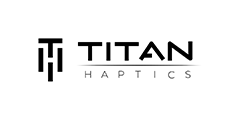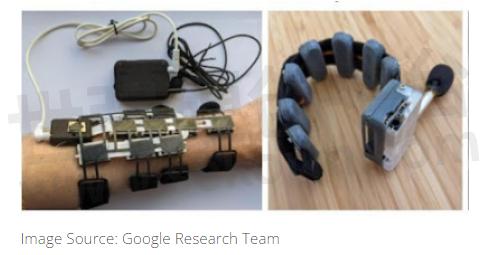Google’s Open Source Vibrotactile Haptic Platform: Combining Feedback and Sensing

Haptics in wearables have become increasingly more common. Smartwatches such as the Apple Watch and the Samsung Galaxy Watches have employed haptics to provide notifications and even directional guidance through different patterns of vibrations. Other wearables, such as FitBits utilize haptics for alarms or to alert you when you’ve reached a new training goal. A study from the Journal of NeuroEngineering and Rehabilitation also shares that haptics in wearables can be used for sensory training and even replacement, helping those with disabilities navigate through life. Haptics are becoming more personal and customizable, capable of alerting you in a way that suits your preference.

What about for those interested in building their haptics-enabled wearable?
The engineers at Google Research have created an open-source vibrotactile haptic project aimed at providing haptic feedback in wearable devices. This platform is designed to enhance user experiences through tactile sensations, with potential applications that could support industries such as assistive technology.
One such application of the wearable is the creation of an audio-to-tactile feedback device intended to aid in lip reading. According to Dementyev, a developer wore the bracelet daily for several months and reported that the vibrotactile haptic feedback gave him better information for lip-reading as compared to other devices. This shows that vibrotactile haptic feedback has the potential to improve the understanding of lip-reading.

“We developed a low-power miniature electronics board that can drive up to 12 independent channels of haptic signals with arbitrary waveforms,” Google Research hardware engineer Arten Dementyev explains. “The VHP [Vibrotactile Haptic Platform] electronics board can be battery-powered, and integrated into wearable devices and small gadgets. It allows all-day wear and has low latency. We show that VHP can be used in bracelet, sleeve, and phone-case form factors.”

The source code and hardware design files for the bracelet have been published to GitHub under the permissive Apache 2.0 license.
- +1 Like
- Add to Favorites
Recommend
- TITAN Haptics at Consumer Electronics Show (CES) 2024 in Las Vegas, Nevada
- Haptic Motors Clustered Haptic Arrays by TITAN Haptics Clusters Unlock New Possibilities
- From Idea to Reality: TITAN Core Helps Make Haptics Integration a Breeze
- Steering the Future: The Role of Haptics in Automobiles
- Haptics in XR, Apple’s Hand Tracking and DIY Haptics Peripherals
- TITAN’s First Haptic Motor DRAKE Packs a Big Punch in a Small Size, Offering 320% Increased Power Density and 4.5Grms Vibrations
- What is Haptics? Perspectives from Top Sources
- Immersive Insights: Exploring the Future of Haptics at the CHI Conference 2024
This document is provided by Sekorm Platform for VIP exclusive service. The copyright is owned by Sekorm. Without authorization, any medias, websites or individual are not allowed to reprint. When authorizing the reprint, the link of www.sekorm.com must be indicated.





























































































































































































































































































































































































































































































































































































































































































































































































































































































